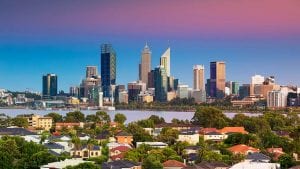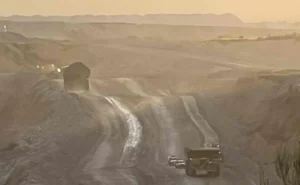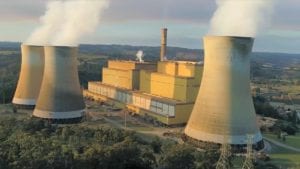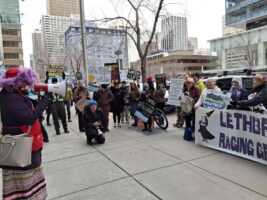EnergyAustralia managing director Mark Collette has signaled that the big three gentailer will not be seeking any further Eraring-type deals to prop up its own aging coal plants, but will be banking on fossil gas-fired generation as a key player in the shift to renewables.
Speaking at Australian Energy Week in Melbourne on Wednesday, Collette said insufficient investment in large-scale wind, solar, storage and transmission, combined with a rapidly aging installed system, had created a market “primed for unpredictability.”
Refreshingly, Collette doesn’t think using public money to extend the life of clunky old coal power plants – EnergyAustralia has a couple, inlcuding Mt Piper in central-western New South Wales – is the answer.
Not any more, at least – the gentailer having struck its own secret deal in 2021 with the Victorian Labor government around the timing of the closure of Yallourn coal plant in the state’s Latrobe Valley.
“Without the new system accelerating, inevitably more is asked of the old – the recent Eraring extension is a case in point,” Collette told the audience at Australian Energy Week.
“This deal with the NSW government absolutely makes sense in the absence of enough progress on the new system. But let’s be clear, while it continues to work effectively the existing coal fired electricity system is aging. It is increasingly fragile.
“Investment cases to maintain coal fired power stations in the face of policy pushing rapid transition are tough. There is a limit to extending the life of old power stations, particularly at short notice.”
On the flip-side, Collette is certainly not ready to call time on the other climate wrecking fossil fuel – gas power generation. Rather, he says the only way to kick coal is to lock in gas as back-up to renewables “for the foreseeable future.”
And he wouldn’t say no to further government support to invest in more “reliability assets” like EnergyAustralia’s 320MW Tallawarra B plant in NSW, which is expected to be formally opened later this month after reported overcoming reported “technical issues”.
“Australia’s renewable based energy system needs lots of solar, lots of wind, lots of storage, and gas fired generation in reserve,” he told the conference.
“Without the gas, here is no way through other than coal. So that’s the choice gas or coal to backup the system for the foreseeable future.”
The conviction that there can be no reliable renewable future without gas is not exclusive to companies fossil fuel incumbents like EnergyAustralia, but it is certainly synergistic with their asset base, as well as their renewables-lite approach to investment.
But the Clean Energy Council’s Christiaan Zuur says this view ignores the major role long duration energy storage technologies – both old and new – can play in supporting Australia’s grid through the sort of wind droughts seen over May.
It also ignores the projected shortfalls in gas supplies and the increasingly urgent pleas from climate scientists to cease all new fossil fuel generation and exploration projects or send global warming to unlivable levels.
“Long duration storage will play a key role in maintaining reliability of supply to manage these seasonal supply shortfalls,” a recent CEC report says, noting that long established technologies like pumped hydro can carry large volumes of stored energy over very long periods of time, including from season to season.
“This carrying capability allows them to ‘charge’ large volumes of energy in spring and early summer when water inflows are most abundant, then hold this energy for several months before discharging when demand is highest, in autumn and early winter,” the report says.
“Further to this, PHES and other forms of ALDES exhibit relatively low levels of lost energy during this carrying period. This improves efficiency and reduces overall cost of the system.
“These characteristics are central to maintaining reliability for customers in a high renewables power system. Many forms of ALDES explored in this report demonstrate very good carrying capability.”
As it happens, EnergyAustralia is currently investigating the feasibility of a pumped hydro energy storage project on land and waterways it owns near Lithgow, in NSW.
On the “lots of solar, wind and storage” that still needs to be built, Collette applauds the introduction – “after years of turbulent political debate” – of project-based government support frameworks, like federal Labor’s Capacity Investment Scheme and the Long-Term Energy Service Agreements.
But he thinks they could use some “tweaks” to make them more effective.
“Governments directly or indirectly funding energy infrastructure, particularly generation has become the new normal. You can count on one hand the number of energy projects built this century without any government support,” he told Australian Energy Week on Wednesday.
“This is a second best policy outcome made necessary by Australia’s inability to land in during National Climate Policy. Now after years of turbulent political debate, government is shifting from market based schemes to project based schemes.
“The risks though, is that these schemes are too focused on efficiency at the expense of predictability and speed. …It’s a difficult job to decide which the next best ones are. And inevitably, this will take time. It’s a process that has handbrakes inbuilt beyond the process.
Collette says alternative, more “blunt market signals” might be better at catalysing fast action and rewarding those who deliver.
“Why not directly reward, just in a fixed dollar-per-megawatt-hour amount, the first 1000MW (of new wind) onto the grid, rather than going through a bespoke project by project selection approach?
“This would be a fast mechanism that rewards delivery. Couple the reward with a requirement that customers or retailers buy the output and this starts to look more predictable for customers,” he says.










